|
|
| ||
Viewing Results under the "Session Graphs" Tab
To view the bidding results in graphical form, click on the "Session Graphs" tab. Under the Session Graphs tab you can look at three different graphs: Time Series, Cumulative Distribution, and Bid vs Value. You can access each graph by clicking on the appropriate tab in the bottom left corner of the window.
Here we can view the normalized price of a fictitious item sold under the four auction regimes. The normalized price is equal to the winner's induced value for the fictitious item divided by the price the winner pays for the item. The price under the first price auction is shown in red, the Dutch auction in blue, the second price auction in green, and the English auction in yellow. In the left box you can click on the boxes to hide and unhide the lines representing the bids of each regime.
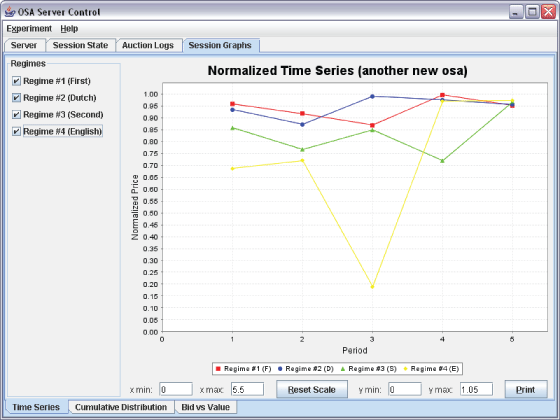
You may choose to compare two, three, or all four regimes at a time by checking and un-checking regimes. Here is a comparison of the normalized prices of a first-price auction and Dutch auction.
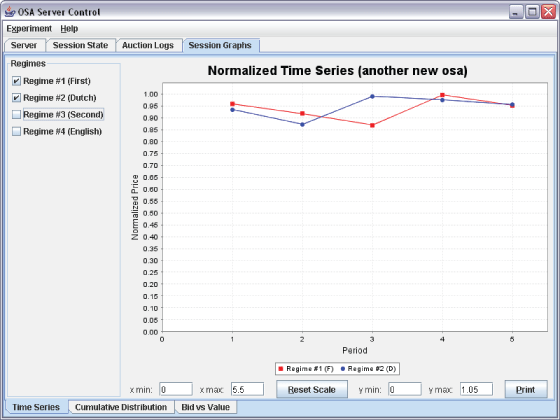
Below is a comparison the of the normalized prices paid under a cumulative distribution for a first-price and second-price auction. The normalized price of each period is ordered to make a cumulative distribution.
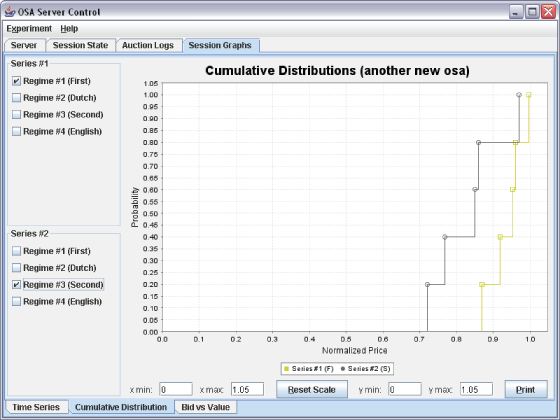
You can also set the scale on the x and y axes to zoom in on parts of the cumulative distribution.
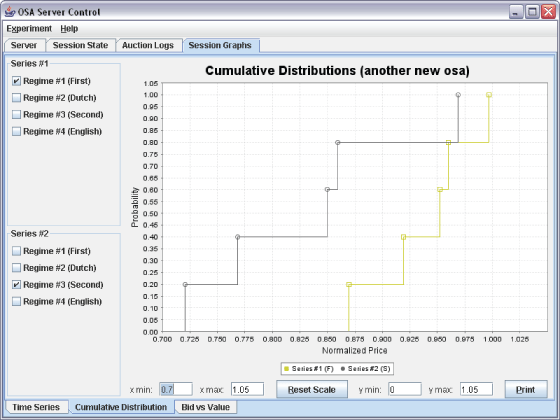
Bid Versus Value Analysis
The red dots shown below map out subjects' values (x-axis) and bids (y-axis) under the first price auction. There is also a dashed blue line and a dashed yellow line. The blue line is the 45-degree line in which the bid equals the value. The yellow line maps out the risk-neutral, Nash best-response bid for each value. Most bids here lie between the blue and yellow lines, meaning that most subjects show some risk aversion in their bids.
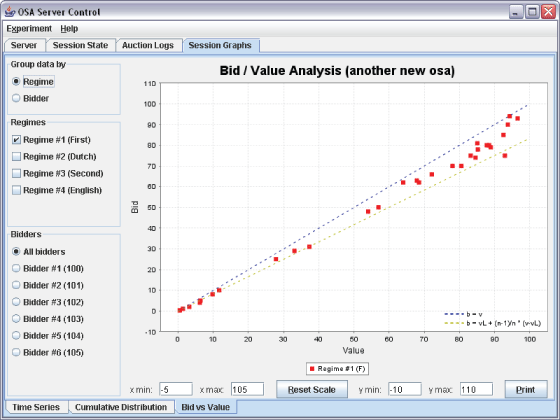
When the bids from the second-price auctions, shown a blue dots, are added, one can see how subjects bidding behavior has changed. For a second-price auction, the best strategy is to bid your value, because its maximizes your chances of winning and the price you pay will be equal to or lower than your value. Most subjects placed bids on or near the dashed blue line. Subjects are found to shade the bids, or hide their true values, under the first-price auction.
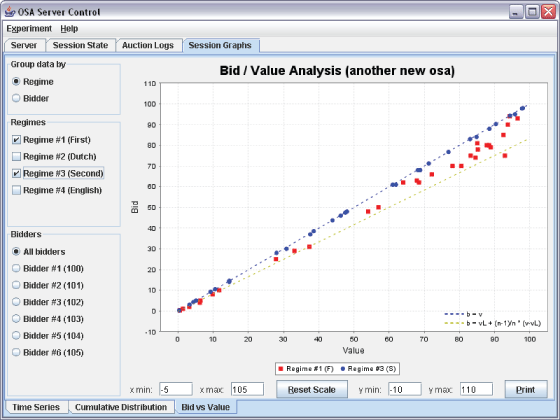
| Copyright 2006 Experimental Economics Center. All rights reserved. | Send us feedback |



